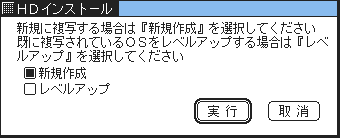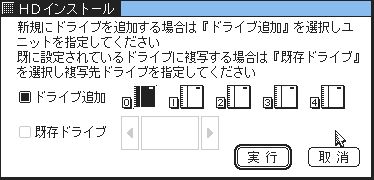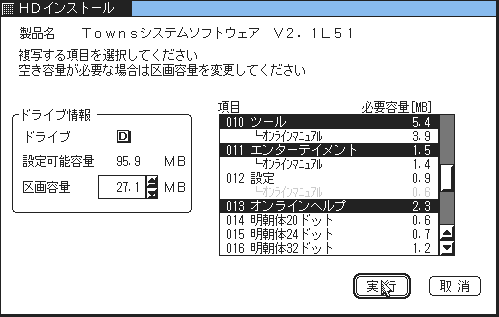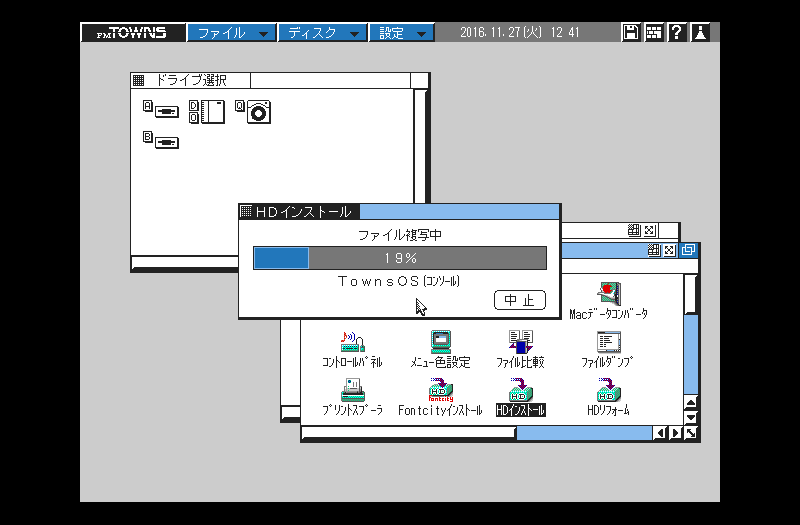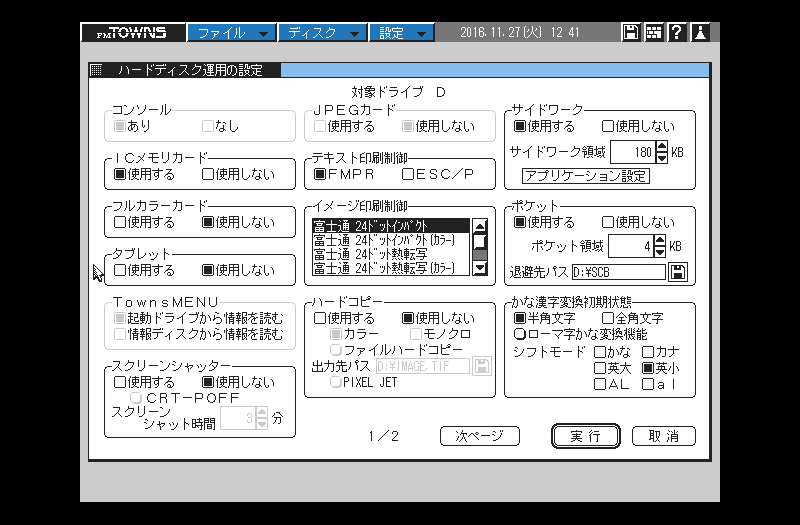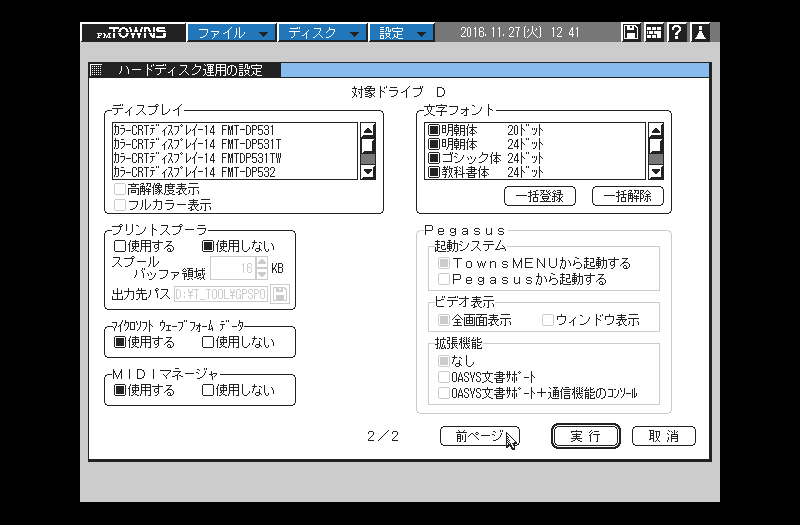Driver:FMTowns: Difference between revisions
(forgot to mention the OS select dialog...) |
|||
| Line 30: | Line 30: | ||
* Now the system will partition and format the drive for you, and then it will reboot. Once back in the GUI, you'll now see a new icon for drive D on the initial window. But first, we need to copy the OS files to the new drive. Open the ツール window, and double-click the HDインストール icon once again. The installation process should now begin. | * Now the system will partition and format the drive for you, and then it will reboot. Once back in the GUI, you'll now see a new icon for drive D on the initial window. But first, we need to copy the OS files to the new drive. Open the ツール window, and double-click the HDインストール icon once again. The installation process should now begin. | ||
[[File:tos_hdinstall_copying.png]] | [[File:tos_hdinstall_copying.png]] | ||
* Once copying is finished, you'll be presented with a customisation dialog. Do note that there are two pages to this dialog, you can switch between them by clicking the left-most button at the bottom of the dialog. Settings can be left as they are, but it is useful to enable the IC memory card driver (click the left option in the ICメモリカード frame on page 1), this will add the loading of the memory card driver to CONFIG.SYS, so that you don't have to. | |||
[[File:tos_hdinstall_customise_1.png]][[File:tos_hdinstall_customise_2.png]] | |||
Revision as of 23:10, 27 December 2016
Installing TownsOS
You will need: - Towns System Software v2.1L51 operating system CD image (software list shortname: tss2151)
- First, create a blank hard disk image using chdman.
./chdman createhd -o <path to HD image file> -c none -chs 768,16,16
The CHS values are up to you, they only affect the size of the disk image, the example given will give about a 100MB image. The geometry itself is irrelevant for the FM-Towns as hard disks are SCSI. -c none is also important, as this disables compression, but allows direct writing to the image data (compressed CHDs are read-only). If you've used the fmtowns driver before, it might be easier if you move or delete all the files in the nvram/fmtowns folder. This will clear all CMOS settings, which may interfere with some things.
- Next, start MAME, with the Towns System Software CD and your newly created hard disk image mounted in -cdrom and -hard1 slots respectively.
./mame64 fmtowns -cdrom tss2151 -hard1 <path to HD image file>
The emulated system should now start to boot from the CD image. Once at the GUI, double-click the ツール (tool) icon in the TOWNSSYSTEM window. In the new window that appears, double-click the HDインストール (HD install) icon (highlighted in this screenshot):
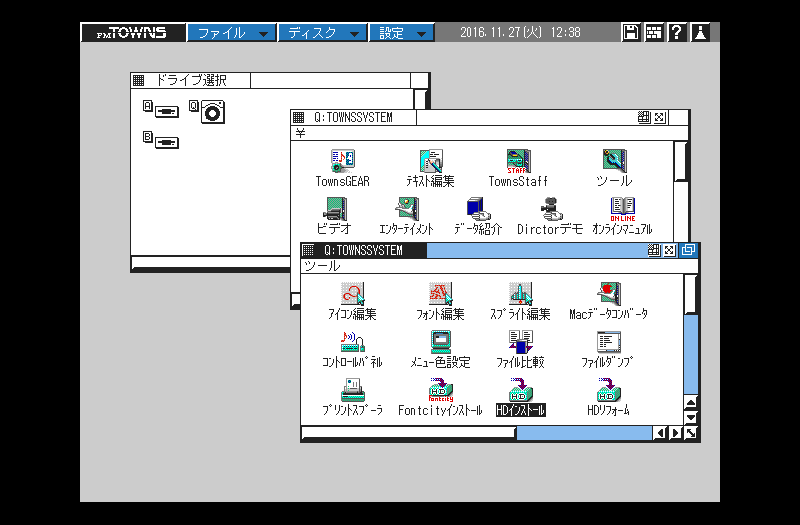
- A dialog will apear, asking the OS to install, either TownsOS or Windows 3.1. Select TownsOS, then click the emboldened button. Now you should see this dialog:
Make sure the first option is selected, and click the emboldened button. The second option is likely used for upgrading an existing TownsOS installation.
- Next select the hard disk to install to. As the disk drive is unformatted, no drive letters are assigned to any HDs, so you must select disk unit number. Numbers are assigned to each physical SCSI HD, from 0 to 4. MAME's -hard1 slot refers to HD unit 0, so click on that icon to select it (it will display inverted, so you know which unit is selected), as shown below, and then click the emboldened button.
- Now you can select which parts of TownsOS you wish to install. You may select multiple items, so long as there is enough space available on the HD image (100MB is plenty). The only required feature is "TownsOS (コンソール)".
Clicking the emboldened button will then bring up a summary of the features to be installed, including the HD unit to install to (should be 0), the drive letter to use for the system drive (it will assign D: for you if there is no other HD drives on the systems), the disk size, and the size of the install. Click the emboldenend button to continue.
- Now the system will partition and format the drive for you, and then it will reboot. Once back in the GUI, you'll now see a new icon for drive D on the initial window. But first, we need to copy the OS files to the new drive. Open the ツール window, and double-click the HDインストール icon once again. The installation process should now begin.
- Once copying is finished, you'll be presented with a customisation dialog. Do note that there are two pages to this dialog, you can switch between them by clicking the left-most button at the bottom of the dialog. Settings can be left as they are, but it is useful to enable the IC memory card driver (click the left option in the ICメモリカード frame on page 1), this will add the loading of the memory card driver to CONFIG.SYS, so that you don't have to.
